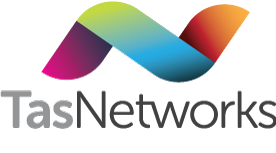Distributed Energy Resource Register
TasNetworks is required to provide information on every Distributed Energy Resource (DER) connected to our distribution network to the Australian Energy Market Operator (AEMO) to feed into their DER Register.
From 1 December 2020, ‘as-built’ information became a mandatory step in the application process prior to TasNetworks forwarding the metering request to the retailer for metering. The person lodging the application (usually the solar retailer or electrical contractor via the TasNetworks Connections Portal) is responsible for providing this information before connection is made.
What's a DER?
DER stands for Distributed Energy Resource. Examples of DERs can include rooftop solar units, wind generating units, battery storage, and solar farms. To meet the requirement for a DER, we’ll need to ask technical questions about any solar (or other embedded generation) connection you apply for. This information will then be fed back to AEMO for their DER Register.
Why do we need a DER register?
The Register will give AEMO and TasNetworks better visibility of the collective generation capacity of DER's, which will enable them to run the electricity grid well and benefit all Australians. It will also enable TasNetworks to:
- Forecast, plan and operate the grid more efficiently, ensuring the system and market can deliver energy at an efficient price for all customers
- Be more prepared for major disruptions to the system with a greater understanding of how DER assets will behave during these events
- Prepare the grid for major innovations with DER such as virtual power plants, and enabling customers to consider and participate in new markets with their DER, and
- Allow networks to make better informed decisions about network investment options in the future as demand changes and DER increases
-
What technical information will I need to provide in my connections application?
Read more
The application form will be structured to capture DER information at 3 levels:
- Installation (e.g. premise) level;
- AC Connection (inverter) level; and
- Device (generator) level
1. The Installation level information will also request Central Protection and Control settings, where applicable. The defaults will be populated from the AS4777:2 standard to aid the application process.
At the AC Connection level the information required will include:
- Manufacturer, series and model numbers;
- Serial number of the inverters or AC equipment;
- Options to specify the configuration of inverter response modes and configuration settings for the modes: e.g: Voltage response modes; Power response modes etc.
- The defaults will be populated for the configurations of the chose mode from the AS4777 standard to aid the application process.
- Manufacturer, series and model numbers;
- Serial number of the inverters or AC equipment;
- Options to specify the configuration of inverter response modes and configuration settings for the modes: e.g: Voltage response modes; Power response modes etc.
- The defaults will be populated for the configurations of the chose mode from the AS4777 standard to aid the application process.
3. At the Device level the information will involve details such as device type (solar, wind, hydro etc), number of modules (devices), manufacturer, model numbers, battery information and nominal capacity of the devices to be installed.
The applications for solar, where there is an existing electricity supply will also ask for Electricity Meter number to be provided as mandatory information to allow us to provide you details of the existing installations. The Applicant can then either modify, add or decommission the components of the existing installation.


